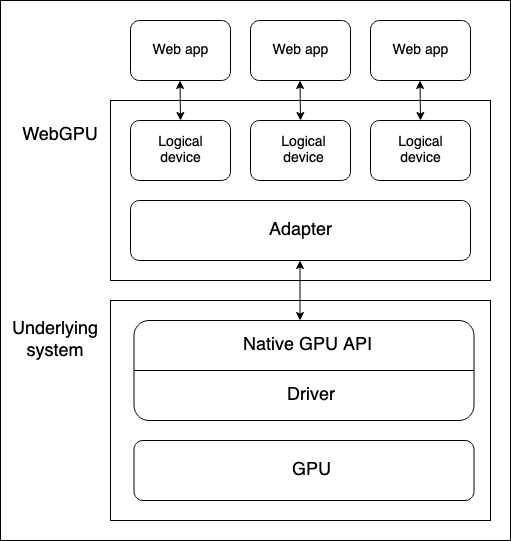须知,vscode是Electron应用,atom是Electron应用,GeForce Experience也是Electron应用,还有Skype。。。
本质是使用chronium浏览器内核和HTML实现应用程序UI,底层业务是基于js”粘合”的,即除了require nodejs native modules之外,还可以将基于其他技术生态的组件集成进来,这里会用到webpack打包。
得益于HTML UI开发的方便,和nodejs api的丰富,使得app 开发变得方便快捷,而且基于js实现了相当完美的跨平台,然而泻药如下:
- 因为不可避免的打包浏览器内核,出品动辄100MB
- 因为打包的是chrome家的内核,内存占用相当大
如果是windows平台的应用需求,wpf的产品将在体积,资源占用,安全的系统访问等方面碾压electron
构建项目框架
- 脚手架 npm i -g angular-cli electron
- 创建Angular项目 ng new ngelectron —routing
- package.json
- 主进程main.js
Caution! 新版本electron嵌入了nodejs运行时,故而系统安装的nodejs环境仅用于执行npm install —save-dev electron,与之后的开发运行再无关系
以angular-electron为例,npm run start过程,1
2
3
4"start": "npm run postinstall:electron && npm-run-all -p ng:serve electron:serve",
"postinstall:electron": "node postinstall",
"electron:serve": "wait-on http-get://localhost:4200/ && npm run electron:serve-tsc && electron . --serve,
"electron:serve-tsc": "tsc -p tsconfig-serve.json",
- 调用postinstall (postinstall.js)修改angular的webpack target
- 随后运行ng serve
- 连接ng serve启动的localhost:4200
- 调用tsc编译main.ts此时生成了main.js
- 执行electron .
webpack target
IPC
IPC 代表 Inter-Process Communication进程间通信。Electron 使用 IPC 来在main主进程和renderer渲染进程之间传递 JSON 信息。
main1
render1
资源打包关于asar vbscript
asar 是一种将多个文件合并成一个文件的类 tar 风格的归档格式。 Electron 可以无需解压整个文件,即可从其中读取任意文件内容。
逻辑中视为文件夹1
2const fs = require('fs')
fs.readFileSync('/path/to/example.asar/file.txt')
单例模式 单例参数更新
外观
无边透明,隐藏任务栏1
let mainWindow = new BrowserWindow({ transparent: true, frame: false, skipTaskbar:true })
实践中发现透明还需另外设置1
2
3body{
background:transparent
}
交互
保持置顶1
2
3win = new BrowserWindow({
alwaysOnTop: true
});
无窗口UI的拖动
设置响应鼠标拖动区域,用css标记-webkit-app-region: drag
参考官方文档: frameless window 可拖拽区域
命令及参数
开发模式electron . [args]1
args = process.argv.splice(2)
执行模式app.exe [args]1
args = process.argv.splice(1)
electron-builder
部分配置1
2
3
4
5
6
7
8
9
10
11
12
13
14
15
16
17
18
19
20
21
22
23
24
25
26
27
28
29
30
31
32
33
34
35
36
37
38
39
40
41
42
43"productName": "CSCportal",
"directories": {
"output": "release/"
},
// 额外打包的资源 不会打包到\resources\app.asar
// 以下规则将文件单独打包到\resources\addon
"extraResources": {
"from": "addon/",
"to": "addon/"
},
// 额外打包配置文件到根目录
"extraFiles":["config.xml"],
// 打包文件的parttern表达式
"files": [
"**/*",
"!package.json",
"!src/",
"src/app/shared/*", // 打包main调用的模块(.js)
"!src/app/shared/*.ts" // 忽略ts源文件
],
// windows环境
"win": {
"target": [
"nsis", // 使用nsis工具生成安装包
"zip" // 生成zip免安装压缩包
],
// code sign(代码签名)
"signingHashAlgorithms":["sha1"], // sign algorithms ['sha1', 'sha256']
"certificateFile":"build/cert/XXXXX.pfx", // 证书路径
"certificatePassword":"XXXXXXX", // 证书密码
"verifyUpdateCodeSignature":false, // 安装前是否验证签名可用更新(available update)
"rfc3161TimeStampServer": "http://timestamp.digicert.com", // time stamp server
"signDlls": true //是否签名DLL
},
"nsis":{
"oneClick":false, // 禁用一键安装
"perMachine":true, // 为所有用户安装
"allowToChangeInstallationDirectory":true, // 自定义安装路径
"include":"build/installer.nsh" // 包含脚本
},
"mac": {},
"linux": {}
}
How to share costom .ts file between main.ts and Angular app
即将文件或目录添加到打包文件的parttern表达式中
nsis宏命令 installer.nsh
在electron-builder.json配置中引入.nsh脚本,脚本定义了NSIS打包生命周期中插入的宏指令
可插入宏:
- customHeader
可以配置NSIS的一些环境或运行条件,如显示详细信息框:详见调用源码1
2
3
4!macro customHeader
ShowInstDetails show
ShowUninstDetails show
!macroend - preInit
This macro is inserted at the beginning of the NSIS .OnInit callback - customInit
- customUnInit
- customInstall
安装 - customUnInstall
卸载 - customRemoveFiles
- customInstallModeuninstaller.nsh
1
2
3!macro customInstall
WriteRegStr HKLM "SOFTWARE\Carestream Dental\CSCportal" "InstallDir" $INSTDIR
!macroendBUILD_RESOURCES_DIR and PROJECT_DIR are defined.1
2
3!macro customUnInstall
DeleteRegKey HKLM "SOFTWARE\Carestream Dental\CSCportal" "InstallDir"
!macroend
build is added as addincludedir (i.e. you don’t need to use BUILD_RESOURCES_DIR to include files).
build/x86-unicode and build/x86-ansi are added as addplugindir.
Caution! 我的angular-electron6项目中,仍然要手动载入plugin,写法同《NSIS插件》笔记中的代码
File associations macro registerFileAssociations and unregisterFileAssociations are still defined.
LogicLib.nsh默认已包含
All other electron-builder specific flags (e.g. ONE_CLICK) are still defined.
参考 electron-builder文档nsis部分 参考NSIS相关笔记
Caution!以上文档对应最新版本electron-builder,经实践v22.7.0可以返回build异常信息,应更新并使用新版本
调试主进程
VScode launch.json:1
2
3
4
5
6
7
8
9
10
11
12
13
14
15
16
17{
"version": "0.2.0",
"configurations": [
{
"name": "Debug Main Process",
"type": "node",
"request": "launch",
"cwd": "${workspaceRoot}",
"runtimeExecutable": "${workspaceRoot}/node_modules/.bin/electron",
"windows": {
"runtimeExecutable": "${workspaceRoot}/node_modules/.bin/electron.cmd"
},
"args" : [".","--input=d:\\temp\\input.xml","--output=d:\\temp\\output.xml"],
"outputCapture": "std"
}
]
}
此app设计为由其他客户端程序使用命令调起,传入input参数和output参数,注意调试命令的’electron .’中’.’是第一个参数。
另外此app是webpack打包的angular electron应用,调试调用主程序js文件,每次更新代码后应使用postinstall进行编译。
自动更新服务
原理似乎是这样的,首先是build,将构建好的文件publish到一个下载中心,很多工具都封装了比如GitHub和Bintray
electron-builder方案
- install electron-updater
- 配置publish参数
一般在package.json中,已分离出electron-build.json配置的在该文件中
本章未完待补充QQs
Error write EPIPE
修改node,electron-builder版本使之兼容可解决
[object][object]
修改electron-builder版本规避
BrowserWindow.loadURL Issue
npm ERR! code ELIFECYCLE
double free exception,重复释放资源,错误使用app.exit()出现此异常
如1
2
3
4
5
6app.on('window-all-closed', () => {
if (process.platform !== 'darwin') {
// app.quit(); // safe!
app.exit(-1) // ELIFECYCLE Exception!!
}
})
spawn makensis,exe ENOENT
electron-builder 不支持yarn2+ 直接使用electron-builder build命令打包即可
GitMemory:Electron-Userland
require is not defined
1 | // Create the browser window. |
shell.openExternal
Open the given external protocol URL in the desktop’s default manner. 对于系统支持的协议,以系统默认行为打开URL
windows 开始 搜索“按协议指定默认应用程序”或“Choose default apps by protocol”
其他概念
- Electron Fiddle是由Electron开发并由其维护者支持的沙盒程序
- 离屏渲染(Off-Screen Rendering)相对于当前屏幕渲染,GPU另辟缓存区为下一步的显示效果进行渲染的机制








